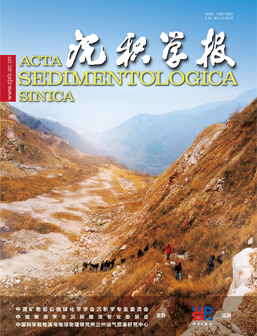The progress of sedimentary architecture and characterization of marine sandy beach-bar: A review
doi: 10.14027/j.issn.1000-0550.2023.108
- Received Date: 2023-08-24
- Available Online: 2023-11-07
-
Key words:
- beach-bar sand body /
- sedimentary architecture /
- shallow coastal waters /
- reservoir characterization /
- genesis mechanism
Abstract: [Objective] The beach-bar sand body is an important reservoir developed in the coastal or lakeshore area. Currently, there are more studies on the architecture of lakeshore beach-bar sand body, while there are differences in the depositional environments between the coastal and lakeshore, and there are differences in the sedimentation patterns of beach-bar, so the research on the architecture of beach-bar sand body needs to be deepened. [Methods] In this paper, based on a large amount of literature research on marine beach-bar deposits, the results are summarised in terms of the sedimentary characteristics and the hydrodynamic mechanism of marine beach-bar sand, the factors influencing the architecture, and the architecture pattern and characterization of it. [Results and discussion] The results show that the beach-bar deposits is dominated by sandbar, the development of sandbar is controlled by a variety of hydrodynamics such as nearshore spiral current, longshore current, rip current, swash current, and backward current in the seafloor, a variety types of sandbar have been formed under multiple types of hydrodynamic action, such as linear sandbar, coastal sandbar, sandbar spits, plume sandbar, tongue-like sandbar, oblique sandbar, etc. There are differences in the architecture characteristics and genesis of different types of sandbar. The sedimentary architecture of the sandbar is controlled by multiple factors. Shoreline morphology and wave interaction processes determine the mode of wave action, the supply of sediment sources and changes in relative sea level affect the development and stacking pattern of the sandbar, and tectonics and sedimentary palaeomorphology control the distribution of the sandbar. The sedimentary architecture of the beach-bar was characterized according to three levels: composite beach-bar, single bar and intra-bar accretionary body, and a preliminary beach-bar architecture model and characterization method were established. [Conclusions] Architecture prototypes should be modelled using various methods such as field outcrops, modern sedimentation, subsurface well datas and sediment simulation, which can help enrich the sedimentological theory of marine beach-bar reservoirs and more effectively guide the development of marine beach-bar oil and gas reservoirs.
| Citation: | The progress of sedimentary architecture and characterization of marine sandy beach-bar: A review[J]. Acta Sedimentologica Sinica. doi: 10.14027/j.issn.1000-0550.2023.108 |






 DownLoad:
DownLoad: